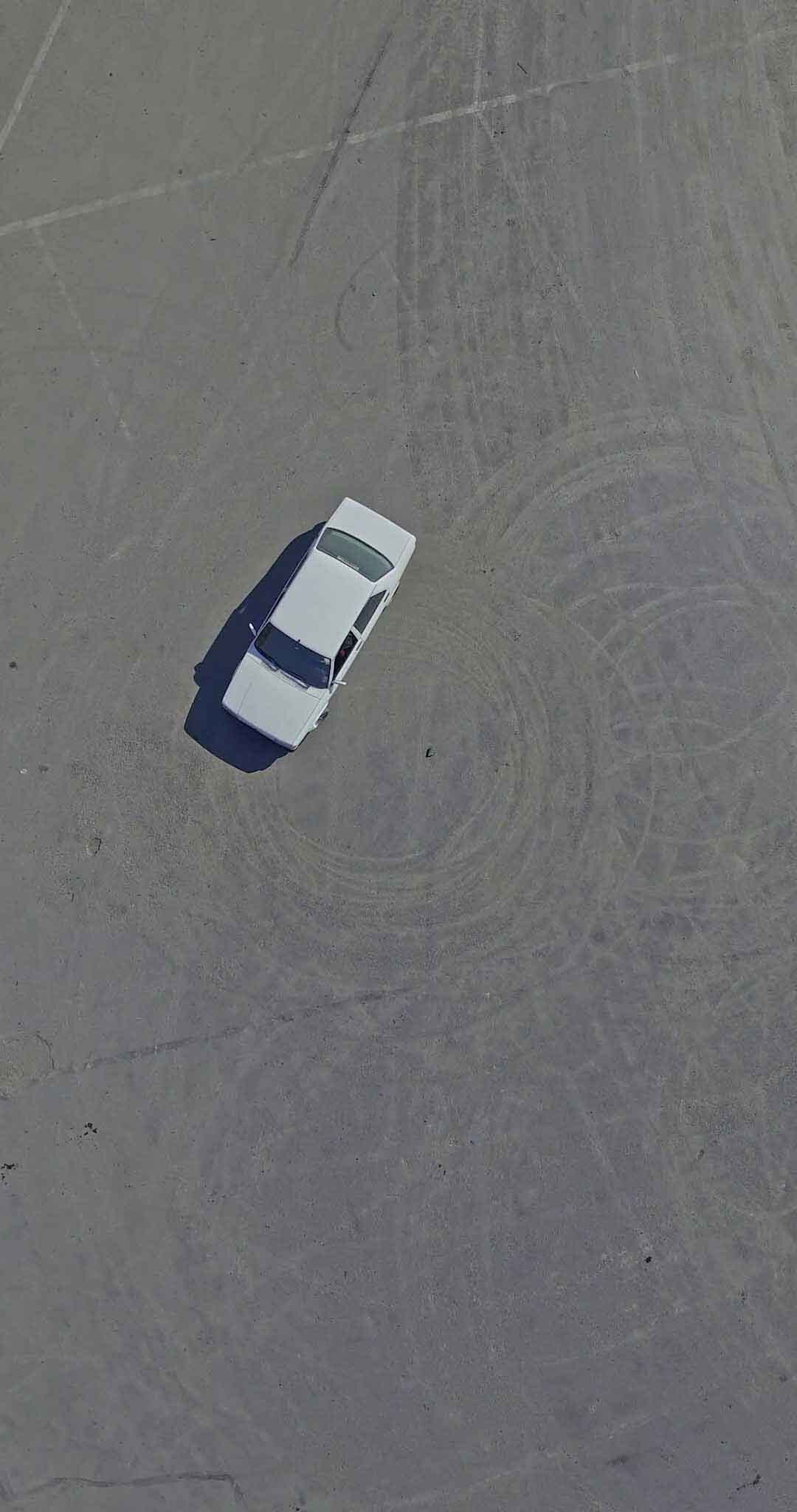Fast and Faster
Amira Akbıyıkoğlu
Amira Akbıyıkoğlu
Fast and Furious Faster
What you will read in this brief text rather serves as a tentative essay. It could also be considered as a loose outline to detect the points in common between the movement that occurs in the videos produced by the artist Burak Kabadayı for the exhibition Static Shifts, Dynamic Rifts and the dance practice of the “action architect” Mehmet Sander. My points of reference will be Sander’s dance manifesto (1990) and his speech[1] at the Southern California Institute of Architecture (1994). While you leave AVTO with this booklet, I hope to tickle your curiosity about Mehmet Sander —whose name you might have heard for the first time— watch his videos on YouTube as soon as you get the chance, and refer back to Burak’s works. In this way, I also hope to extend the lifespan of the exhibition.
When Burak invited me to contribute to this exhibition with an essay, the first thing that crossed my mind was figure skating and spins, whose championships I was once following day and night. But the necessity for skaters to emotionally reflect the choreography and music, or the lyrical tone of the spectacle didn’t seem to match an auto show and its soundscape. Whereas Sander, who associates his works rather with architecture and physics than performance, did not use music in his choreographies and was not interested in conveying emotions. Dedicating his practice to the choreography of the negative space, the artist considers dance —in its most reduced form— as the employment of the human body within space under the laws of physics. The (distant) affinity between Sander’s actions and the drifter’s driving techniques in Kabadayı’s videos is based on three basic elements, which they examine through physical forces such as speed, collision, resistance, and inertia (inaction): movement, space and time. And there is no hierarchy between these three constituents; all have an equal share in the making of a performative moment.
Founding his dance company in 1990 in the United States, Mehmet Sander takes up the maximum speed as he mounts his actions. He tries to emulate a bullet that comes out of a barrel and pierces the target for a human body to pierce the space. Therefore he occasionally takes his dancers to the shooting range for target practice. “Can you go through a wall? Can you explode physically? Can you run in two opposite directions at the same time? Can you fall upwards? Can you fall upwards and downwards at the same time? When you try it, even if you prove yourself wrong, then there is the idea of new movement and space occupation.”[2]
His manifesto is slanted towards non-stop, uninterrupted movement: From the commencement of the dance piece to its conclusion, the dancers never cease movement unless their range of motion is impeded by physical forces such as the confinement of space or the impact against a wall or other dancers. He lays out his interest not in the way his body covers a distance, but in its transformation into a line and a space. Similarly, Burak’s videos register the movements of vehicles that are not intended to get from point A to point B.
The movement of a car constantly spinning around the same center is reminiscent of Sander’s solo performance Single Space (1992). A single car versus a single dancer, a vehicle enacting the movement or a space limited by human height and uninterrupted movement. Sander attaches importance to the economic use of space in which he produces and performs his actions: “Space is how you design, define, and confine it.” The choreography of this performance is developed through the cyclical rotation of a television screen. He turns the television sideways while watching the video record of the rehearsal, which serves as a guide for the performance. He records himself and flips the screen sideways to re-enact his moving image. The performance consists of four sequential iterations of this act.
In another video in the exhibition that takes place at AVTO, we see a tow truck that disappears as it moves towards the horizon and a car that stays still by skidding on it. İzafiyet [Relativity], performed by Sander in Copenhagen in 1996 has a similar layout. Four dancers moving on top of a truck on a racetrack.
Yet Sander eventually admits that he finds it dull just to design duets with dancers. Is it possible to prevent people from being constrained by one another’s velocity while making them interact with faster-moving objects? He concludes his speech at the institute by addressing his work Choreography With Faster Moving Objects, which is based upon this question. It just so happens that by faster-moving objects he means cars accelerating from thirty miles to forty miles per hour. This unrealized work consists of five duets in which dancers on a scaffold would fall onto the speeding cars.
In short, both Sander and Kabadayı, who would most likely be acquainted with each other through this brief text, attempt to probe beyond scientific knowledge about the power of physical action through their works. Such inquiries source from the execution of challenging actions within various limits, and bear the potential of generating an infinite array of visual possibilities.
[1] Mehmet Sander’s speech at the Southern California Institute of Architecture (1994) is available on YouTube, https://www.youtube.com/watch?v=EGKxyz1Ea7s
[2] The passages in double-quotes are excerpts from the artist’s speech at the Southern California Institute of Architecture, and the passages in italics are excerpts from his dance manifesto (1990).




